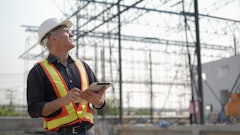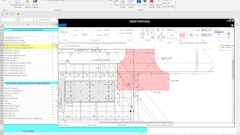
The Executive Office of the President, on Nov. 17, 2020, released a memorandum about regulatory guidance on the use of artificial intelligence (AI). This memorandum outlined policies regarding encouraging innovation and growth in AI, principles for stewardship of AI applications and non-regulatory approaches. In addition, there was a pledge concerning the attempt to find ways to reduce barriers hindering AI innovation.
However, what does this mean for the construction industry? As of recently, many companies are relying on AI to analyze data, which helps anticipate threats and opportunities throughout their day-to-day activities. This intricate examination of data and patterns allows for companies to manage and improve their business operations.
AI can also be utilized to have substantial positive impact on workers that are operating on production sites. The remote construction market is one of the many areas that benefit from the implementation of AI. According to Future Market Insights, an ESOMAR-certified market research firm, the East Asian remote construction market is anticipated to rise 17 percent CAGR over the next 10 years.
The recent memorandum aims to clarify and implement guidance for regulatory and nonregulatory approaches that AI is involved in. It highlights the importance of stimulating innovation and growth, where AI is involved, to help sustain our economic and national security.
In addition, the principles outlined in the memorandum calls attention to providing a positive public image of AI and their participation, scientific integrity and quality information, risk assessment and management, flexibility, disclosure and other points to help further AI improvement.
“The U.S. Chamber applauds the release of the White House’s ‘Guidance for Regulation of Artificial Intelligence Applications,'" said Executive Vice President of the U.S. Chamber’s Technology Engagement Center, Tom Quaadman. “The guidance outlines a commonsense and comprehensive approach to address the regulation of AI applicants, which has broad bipartisan support.
“Moreover, the guidance will serve as an essential building block for U.S. global leadership on AI governance. We look forward to working with federal agencies to ensure the effective implementation.”
This memorandum, while protecting the growth of AI, will help the construction industry utilize AI’s power to reach effective, efficient and innovative ways to finish job sites. With the capabilities of AI, the construction industry can develop safe alternatives to lengthy, dangerous and unpredictable circumstances.






























